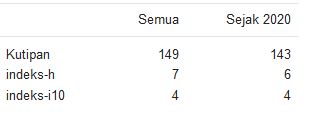Pelvic Stability Training on Movement Control, Pelvic Muscle Strength, Walking Speed, and ADL in Post-Stroke Patients: CASE STUDY
DOI:
https://doi.org/10.46749/qpkr3b52Keywords:
Pelvic Stability Training, Rehabilitation, Muscle Strength, ADL, StrokeAbstract
A cute hemiparesis can develop in response to a variety of cerebral diseases including intracerebral hemorrhage and ischemic stroke, Pelvic stability training is an exercise protocol designed based on neurophysiological and biomechanical aspects of pelvic stability designed based on the performance of each patient so as to increase pelvic stability. pelvic stability training is carried out for 30 minutes, 3 times per week, for 3 weeks. Pelvic stability training (PST) exercises have been shown to improve motor function in the lower extremities both in muscle strength, and to help meet ADL.
References
Ayis, S., Wellwood, I., Rudd, A. G., McKevitt, C., Parkin, D., & Wolfe, C. D. A. (2015). Variations in Health-Related Quality of Life (HRQoL) and survival 1 year after stroke: Five European population-based registers. BMJ Open, 5(6). https://doi.org/10.1136/bmjopen-2014-007101
Brenner, I. (2018). Effect of Passive Exercise Training in Hamiplegic Stroke Patient: Mini-Review. Sports Med Rehabil J. 2018; 3 (3), 1036.
Dubey, L., Karthikbabu, S., & Mohan, D. (2018). Effects of Pelvic Stability Training on Movement Control , Hip Muscles Strength , Walking Speed and Daily Activities after Stroke : A Randomized Controlled Trial, 80–89. https://doi.org/10.1159/000486273
Hiraga, A. (2017). Gender Differences and Stroke Outcomes, 0003, 61–62. https://doi.org/10.1159/000475451
Liu, H., Shi, Y., Shi, Y., Hu, R., & Jiang, H. (2016). Nursing management of post-stroke dysphagia in a tertiary hospital. JBI Database of Systematic Reviews and Implementation Reports, 14(7), 266–274. https://doi.org/10.11124/JBISRIR-2016-002971
Katherine Salter Phd. 2016. Post Stroke Depression and Mood Disorders. Heart&Stroke Foundation canadian Partnership for Stoke Recovery.http://www.ebrsr.com/sites/default/files/Chapter%2018_Supplementary%20Tables.pdf
Kim, H. J., Lee, Y., & Sohng, K. Y. (2014). Effects of bilateral passive range of motion exercise on the function of upper ex- tremities and activities of daily living in patients with acute stroke. Journal of Physical Therapy Science, 26(1), 149e156
Kozier, B., Erb, G. L., Berman, A., Snyder, S., Levett-Jones, T., Dwyer, T., ... & Park, T. (2011). Kozier & Erb's Fundamentals of Nursing Australian Edition. Pearson Higher Education AU.
Misbach. J. (2011). Stroke: Aspek diagnosis, patofisiologi, manajemen.Jakarta: Penerbit FKUI Indonesia
National Stroke Association. (2016). Post-Stroke Conditions. http://www.stroke.org/we-can-help/survivors/strokerecovery/post-stroke-conditions
Potter, P. A. & Perry, A. G. (2010). Fundamental Keperawatan, Edisi 7. Jakarta: Salemba Medika.
Prasetyanto, D., & Yona, S. (2019). Meridian acupuncture in stroke rehabilitation: a literature review. International Journal of Nursing and Health Services (IJNHS), 2(2), 48-54.
Roy-O’Reilly, M., & McCullough, L. D. (2018). Age and sex are critical factors in ischemic stroke pathology. Endocrinology, 159(8), 3120-3131.
Irfan, Muhammad, 2010. Fisioterapi Bagi Insan Stroke. Edisi Pertama. Penerbit Graha Ilmu:Yogyakarta.
World Health Organization. (2016). Stroke, Cerebrovascular Accident. National Stated. Diunduh dari:<http://www.who.int/topics/cerebrovascular_accident/en/ >
Wisegeek, (2010). Physiological and Methodological considerations for the use of Neuromuscular Electrical Stimulation
Downloads
Published
Issue
Section
License
Copyright (c) 2023 Unit Penelitian dan Pengabdian Masyarakat STIKES Fatmawati

This work is licensed under a Creative Commons Attribution-NonCommercial-ShareAlike 4.0 International License.




